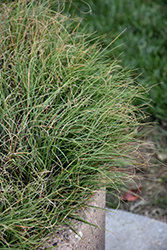It's all about ...
plants

Plant Height: 16 inches
Flower Height: 24 inches
Spread: 12 inches
Sunlight:
![]()
![]()
Hardiness Zone: 3a
Other Names: Poverty Oat Grass
Description:
A small, cool season perennial grass that is ideal for dry, upland areas with full to part sun and poor soil; dense wiry clumps produce delicate flower panicles that rise above the foliage in spring; adaptable, and will colonize fire cleared land
Ornamental Features
Poverty Grass is primarily valued in the garden for its interestingly mounded form. It has masses of beautiful spikes of white flowers with light green overtones rising above the foliage from late spring to early summer, which are most effective when planted in groupings. Its attractive twisted threadlike leaves are bluish-green in colour. The foliage often turns tan in fall.
Landscape Attributes
Poverty Grass is an open herbaceous perennial grass with a mounded form. It brings an extremely fine and delicate texture to the garden composition and should be used to full effect.
This is a relatively low maintenance plant, and is best cleaned up in early spring before it resumes active growth for the season. It is a good choice for attracting butterflies to your yard, but is not particularly attractive to deer who tend to leave it alone in favor of tastier treats. It has no significant negative characteristics.
Poverty Grass is recommended for the following landscape applications;
- Mass Planting
- Rock/Alpine Gardens
- Border Edging
- General Garden Use
- Groundcover
- Naturalizing And Woodland Gardens
- Container Planting
Planting & Growing
Poverty Grass will grow to be about 16 inches tall at maturity extending to 24 inches tall with the flowers, with a spread of 12 inches. Its foliage tends to remain dense right to the ground, not requiring facer plants in front. It grows at a medium rate, and under ideal conditions can be expected to live for approximately 10 years. As an herbaceous perennial, this plant will usually die back to the crown each winter, and will regrow from the base each spring. Be careful not to disturb the crown in late winter when it may not be readily seen!
This plant does best in full sun to partial shade. It prefers dry to average moisture levels with very well-drained soil, and will often die in standing water. It is considered to be drought-tolerant, and thus makes an ideal choice for a low-water garden or xeriscape application. It is not particular as to soil pH, but grows best in poor soils. It is highly tolerant of urban pollution and will even thrive in inner city environments. This species is native to parts of North America..
Poverty Grass is a fine choice for the garden, but it is also a good selection for planting in outdoor pots and containers. It can be used either as 'filler' or as a 'thriller' in the 'spiller-thriller-filler' container combination, depending on the height and form of the other plants used in the container planting. Note that when growing plants in outdoor containers and baskets, they may require more frequent waterings than they would in the yard or garden. Be aware that in our climate, most plants cannot be expected to survive the winter if left in containers outdoors, and this plant is no exception. Contact our experts for more information on how to protect it over the winter months.
